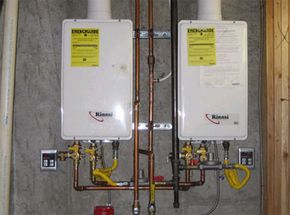Inside your gas-operated water heater is a tiny gas flame called a pilot light, whose purpose is to ignite the burner whenever the temperature falls below the thermostat setting. Right next to the pilot light is a small metallic tube known as a thermocouple. But how does a thermocouple work, exactly?
Primarily, this is a safety device. Its purpose is to monitor the pilot light and send a signal that shuts the gas burner valve should the pilot light ever go out — and keep it shut until the thermocouple senses that the pilot light is lit. If the thermocouple stops working, the pilot light will go out, preventing the burner from working [source: Family Handyman].
Advertisement
In this article, we'll not only explain how thermocouples measure temperature, but also discuss different thermocouple types and applications. Finally, we'll show you how to test a thermocouple on a gas valve.


